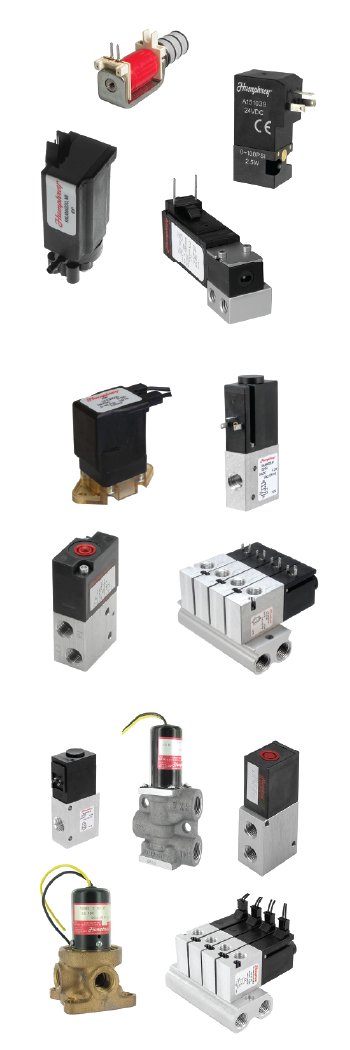Choosing the Right Solenoid Valve for Your Application
There are plenty of variables to consider when selecting a solenoid valve for your fluid control application. Let’s take a look at some of the factors that come into play, and we’ll help narrow your search.
What does the solenoid valve need to accomplish?
Always begin with the valve “need”. What will the solenoid valve do in the application, both in the unactuated, at-rest state, and the actuated, coil-energized, state? Examples:
- Control an air cylinder (4-way valve)
- Start or stop flow only (2-way)
- Pilot a process valve (3-way)
- Deliver variable flow (proportional)
Determine what you need to do and what the timing requirements are.
What media will the solenoid valve manage?
Your system’s pressurized fluid, whether gas or liquid, is another component to consider when determining the right valve for your application. Secondly, determine the expected minimum & maximum system pressure. It’s essential to find a valve design composition that will perform over an expected cycle life.
The media’s chemical properties and temperature will dictate the valve’s compatibility. Incompatible valve materials will react to the media, degrade and fail prematurely. Degradation can be gradual, reducing cycle life, and requiring increased preventative maintenance or unexpected repairs.
Will there be more than one media for the application? Consider things like cleaning/flushing fluids, or the possibility of poor or water-ladened compressed air. Always plan for the most challenging media.
What size solenoid valve does the application require?
Properly sizing the flow capacity of the valve is next. Many manufacturers publish a flow rating (LPM, CFM, GPM) at the valve’s maximum pressure specification. Selecting an insufficiently sized valve will degrade system performance, or extend cycle times. It’s crucial to select a valve that can exceed the flow rate of your application, and when a minimum system pressure may exist. Manufacturers usually provide an industry-accepted flow coefficient (Cv, Kv) that can be used to compare valve brands.
What operating conditions will the solenoid valve face?
Not all solenoid valves are used with clean dry compressed air, controlled precisely to 50 psig and within air conditioned, pristine work environments. Consider more than the most ideal conditions, and specify the valve around those parameters. This includes pressure fluctuations, quality of the media, temperature extremes and work environments.
Consider valve cycle rates and energized times to be expected of the valve, as performance and life of some brands can be affected. And finally, all valves can leak (extremely small amounts) of the media – some brands more than others – particularly as the valve wears over time. Take reasonable precautions and anticipate valve leakage.
A reliable valve manufacturing partner will help you find the right solenoid valve for any application. Call 800-477-8707 or contact Humphrey Products online, and we’ll get you started.

